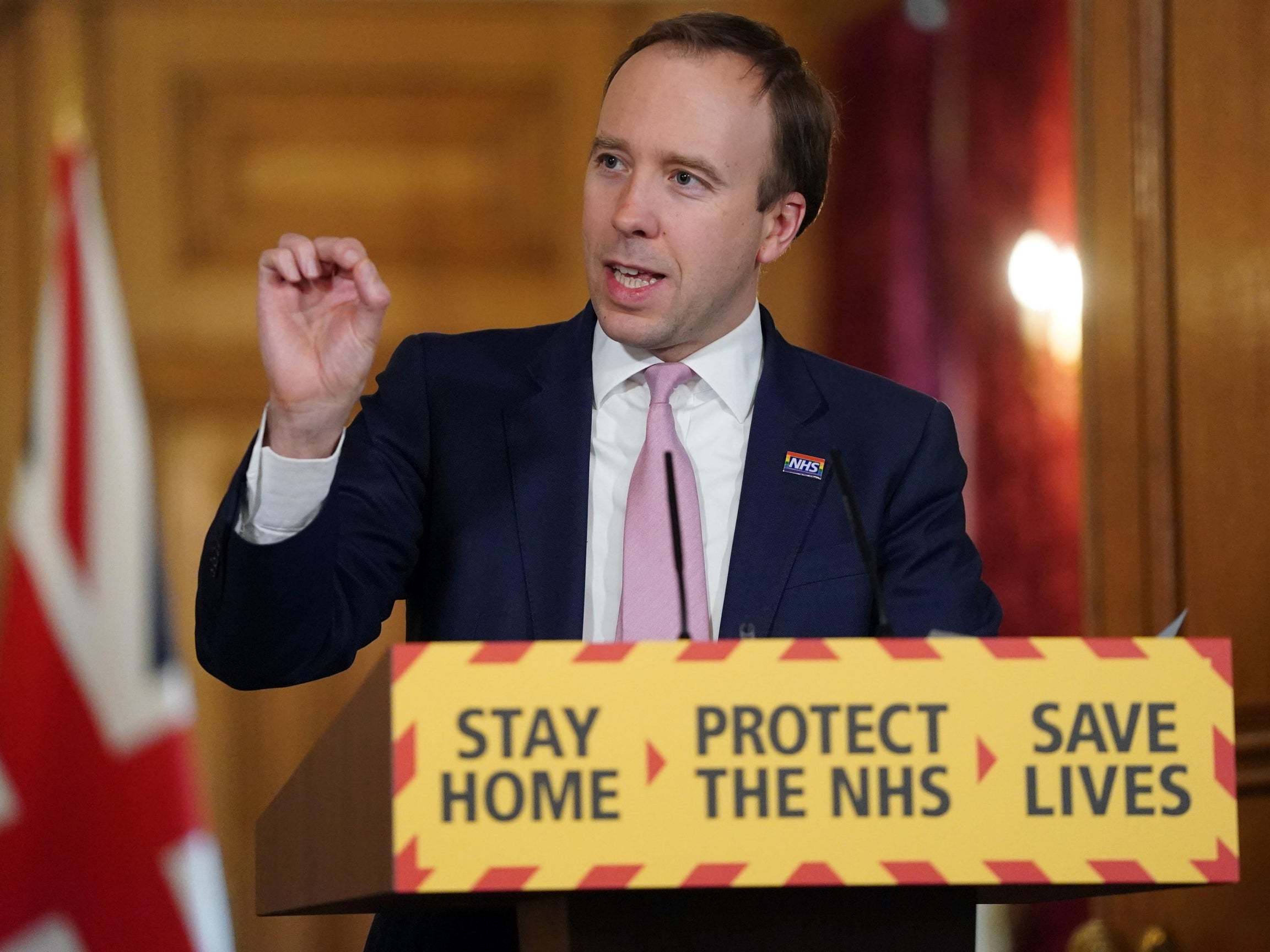
It has been suggested in some quarters that Matt Hancock is the provisional health secretary; that, because he is not in with the in-crowd of Vote Leavers around the prime minister, he will find himself pushed aside when Boris Johnson is back.
I don’t think that is right, and Hancock himself explained why in an interview on the Today programme yesterday. He was pressed on the big question of the moment: when will the lockdown rules be changed to allow the economy to start up again? “I will not allow the changes to be made that are unsafe,” he said.
It sounded as if he thought he, not the prime minister or the cabinet, would decide. If you stop to think about it, it may even be true. If he says it is not “safe” to relax the restrictions because people will die, it puts him in a powerful position to interpret the government’s five tests for lifting the lockdown.
Download the new Independent Premium app
Sharing the full story, not just the headlines
As the prime minister surveys the battlefield from Chequers, deciding when and how to re-enter the fray, he can see that his health secretary is ranged against a vocal phalanx of the parliamentary Conservative Party. Rishi Sunak and Michael Gove in the cabinet are pressing to get the people back to work, supported by the executive of the 1922 Committee, which represents Tory backbenchers.
But he can also see that Hancock has the upper hand. If the trade-off is between saving lives and saving jobs, saving lives is always going to win, and I would certainly rather the government erred in that direction.
Hancock himself asserts that there is no trade-off. He told Today: “The improvement in health from getting the number of new cases right down is also the best thing for the economy because the worst thing for the economy would be a second spike.”
All that does, of course, is redefine the question. How low does the number of new cases have to go, and what does he mean by a second spike?
It used to be the case that the aim was to avoid a second peak of infections that risked overwhelming the NHS – the same objective as that of flattening the initial curve. But this week Hancock and other ministers have said that the lockdown can be eased only when they are sure there will be no second peak at all.
Instead of keeping the rate of infection within the capacity of the NHS, it seems that Hancock wants to try something more ambitious: to suppress the virus altogether, using the programme of “test, track and trace” that he announced on Thursday.
Beth Rigby, Sky News political editor, asked what the objective was at Thursday’s daily briefing, and Hancock’s answer was significant.
It was significant not because he answered the question, but because he said who would answer it. Instead of saying that the government would follow the advice of the scientists, which has been the line until now, he said the opposite: “Those questions are ultimately for politicians because they are the big judgements.” He said he would ask Sir Patrick Vallance, the government chief scientific adviser, to comment on the science, but “ultimately the judgements are made by the cabinet on the advice of the scientists”.
I wonder if Sir Patrick has told Hancock that he does not want to be the fall-guy for decisions made by politicians, or if Hancock felt it was demeaning for cabinet ministers to present themselves as merely carrying out instructions handed to them by the boffins. Possibly both. In any case, Hancock repeated the point: “All of this becomes a strategic question rather than purely a scientific question – but it is of course based on the science.”
He then turned to Sir Patrick, and it is worth quoting his response at length: “Absolutely right. We advised on what measures needed to be put in place to keep the numbers down below NHS critical-care capacity. That was absolutely crucial, and looks like that has been achieved. And therefore that’s one really important step. And we are advising now on what measures need to be in place in order to get those numbers lower for the reasons the secretary of state said, and what numbers are necessary in order to get down to ‘test, track and trace’ approaches. But the decision on how far to go and which measures should be released and so on are ones for ministers.”
This sounds constitutionally proper. The big decisions that face Boris Johnson as he returns to work cannot be subcontracted to “following the science”. Hancock even suggested they might be taken collectively by the cabinet.
But the truth is that, on this subject, it is Hancock who is “first among equals” in the cabinet. He has the power to decide. Even if Johnson were impatient to ease the lockdown – which it is not clear he is – he could not do so while his health secretary said it was “unsafe”.
Given that Hancock appears to be going for a policy of total suppression of the virus, this suggests the lockdown will be more severe and last longer than many Conservatives want.



